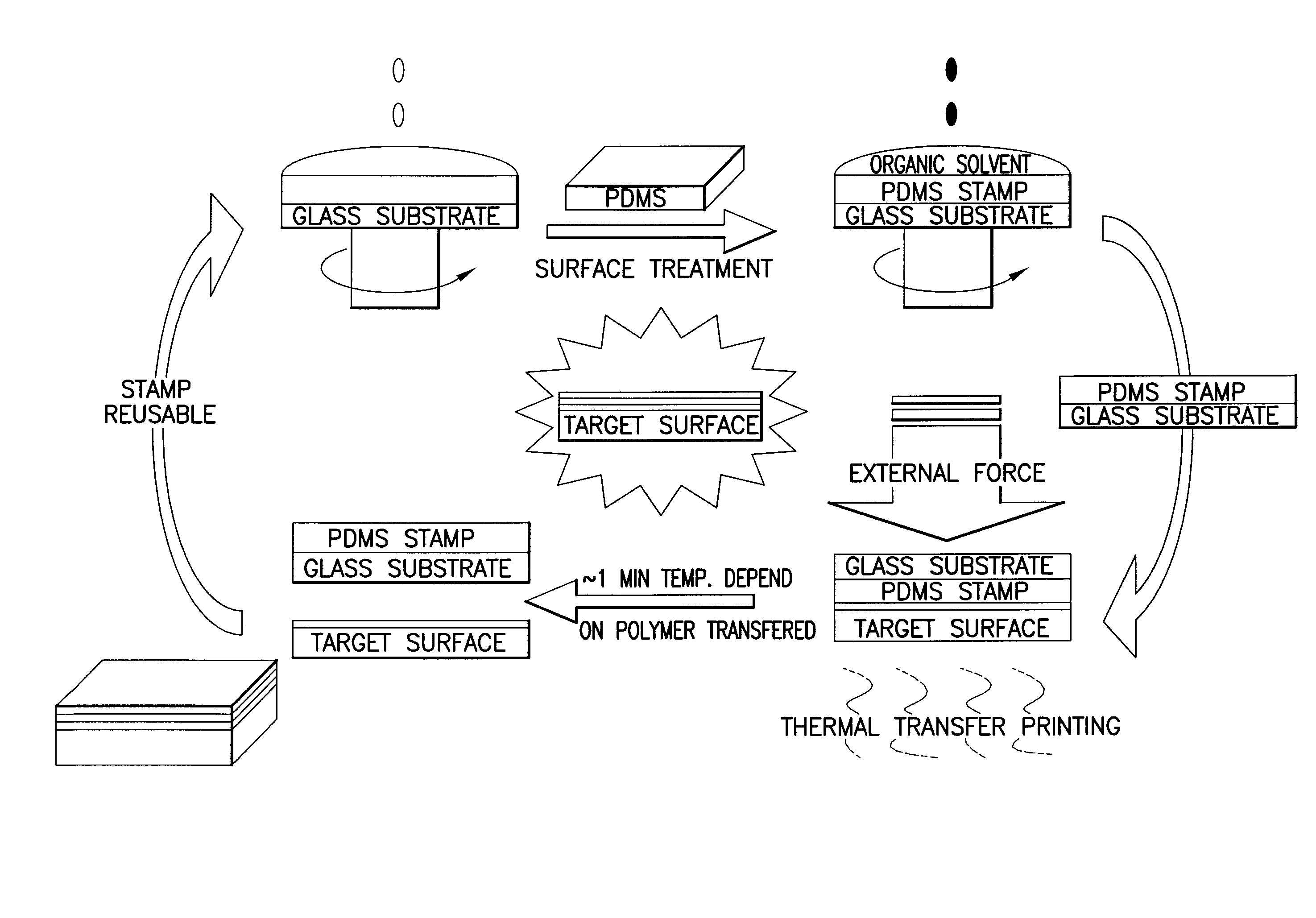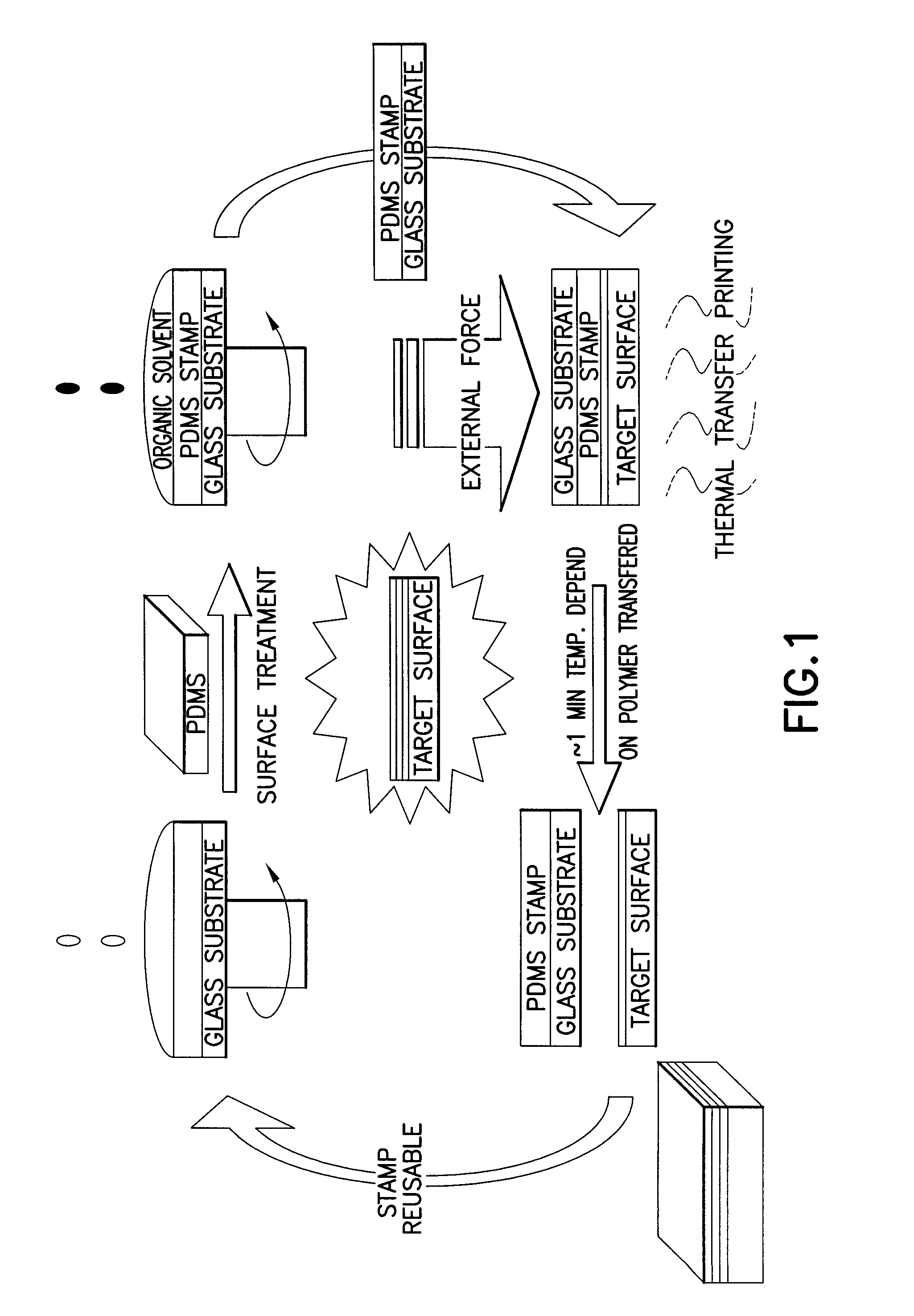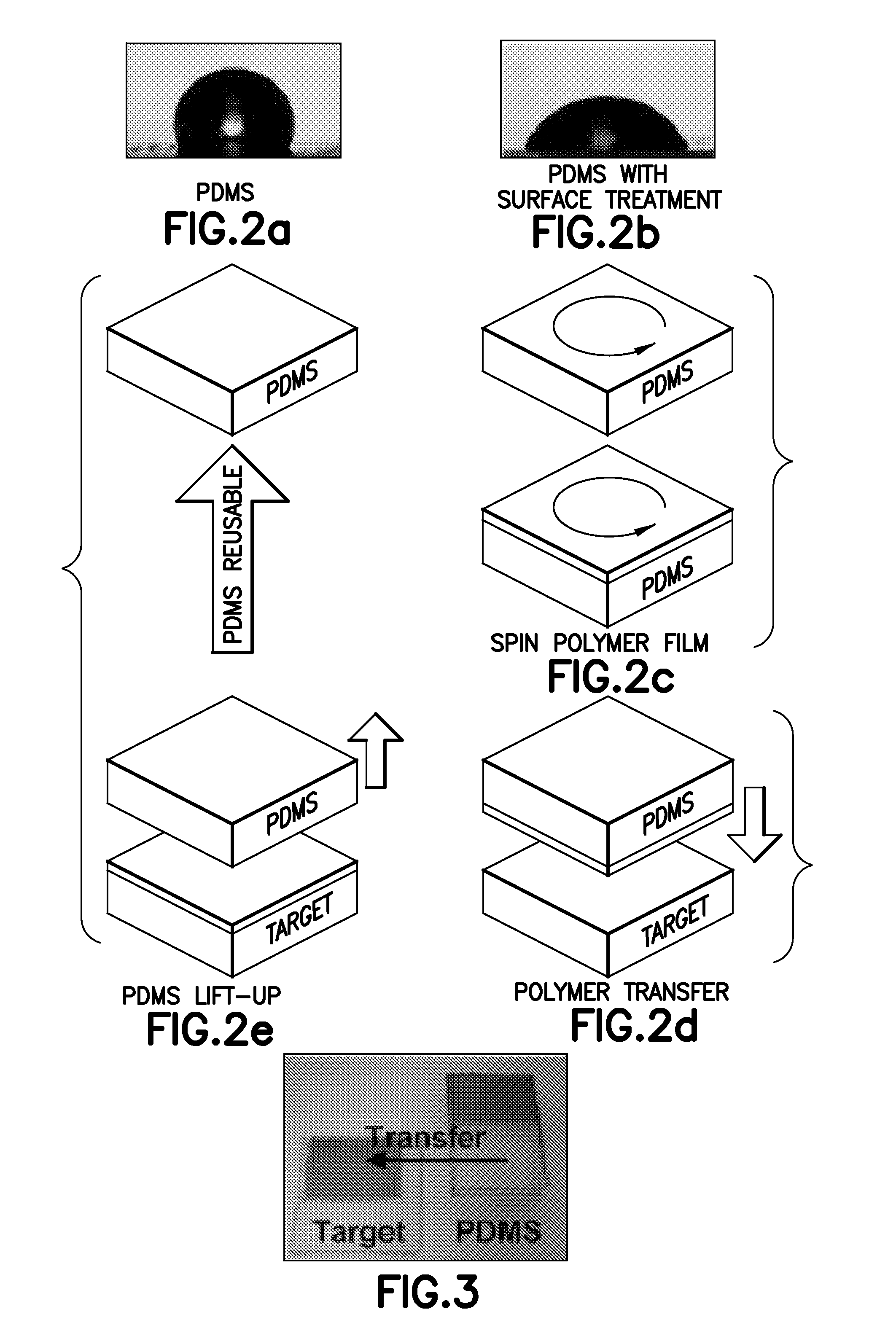Method for Fabricating Organic Optoelectronic Multi-Layer Devices
a multi-layer device and optoelectronic technology, applied in the field of optoelectronics, can solve the problems of inability to fabricate arbitrary, all-solution-processed multi-layer polymer electronics, and the performance of inorganic based devices is comparatively lower than that of inorganic based devices, so as to improve the quality of polymer film fabrication, reduce cost, flexibility, and reduce weight
- Summary
- Abstract
- Description
- Claims
- Application Information
AI Technical Summary
Benefits of technology
Problems solved by technology
Method used
Image
Examples
Embodiment Construction
[0035]Disclosed is a method that provides a way to universally improve polymer film fabrication via a polydimethylsiloxane (PDMS) transferring process. A cascade architecture layer is constructed layer-by-layer via a PDMS polymer thin-film transference. The method eliminates the need for any unwanted molecules and the damage that they can potentially cause on bottom films, which results from the preceding film during the transferring process. As a result, a stable, fast and reproducible way is achieved to fabricate organic optoelectronic multi-layer devices.
[0036]FIG. 1 is a flow diagram of a film transfer in accordance with the method of the invention. In general, the method comprises treating a PDMS surface comprising a silicon wafer fixed on a glass substrate with organic solvents by spinning. Next, the transferred film from an organic solvent is spun directly on the PDMS stamp. An external force and thermal annealing are simultaneously used to transfer the film spun on the PDMS ...
PUM
| Property | Measurement | Unit |
|---|---|---|
| temperature | aaaaa | aaaaa |
| shear stress | aaaaa | aaaaa |
| pressure | aaaaa | aaaaa |
Abstract
Description
Claims
Application Information
 Login to View More
Login to View More - R&D
- Intellectual Property
- Life Sciences
- Materials
- Tech Scout
- Unparalleled Data Quality
- Higher Quality Content
- 60% Fewer Hallucinations
Browse by: Latest US Patents, China's latest patents, Technical Efficacy Thesaurus, Application Domain, Technology Topic, Popular Technical Reports.
© 2025 PatSnap. All rights reserved.Legal|Privacy policy|Modern Slavery Act Transparency Statement|Sitemap|About US| Contact US: help@patsnap.com



